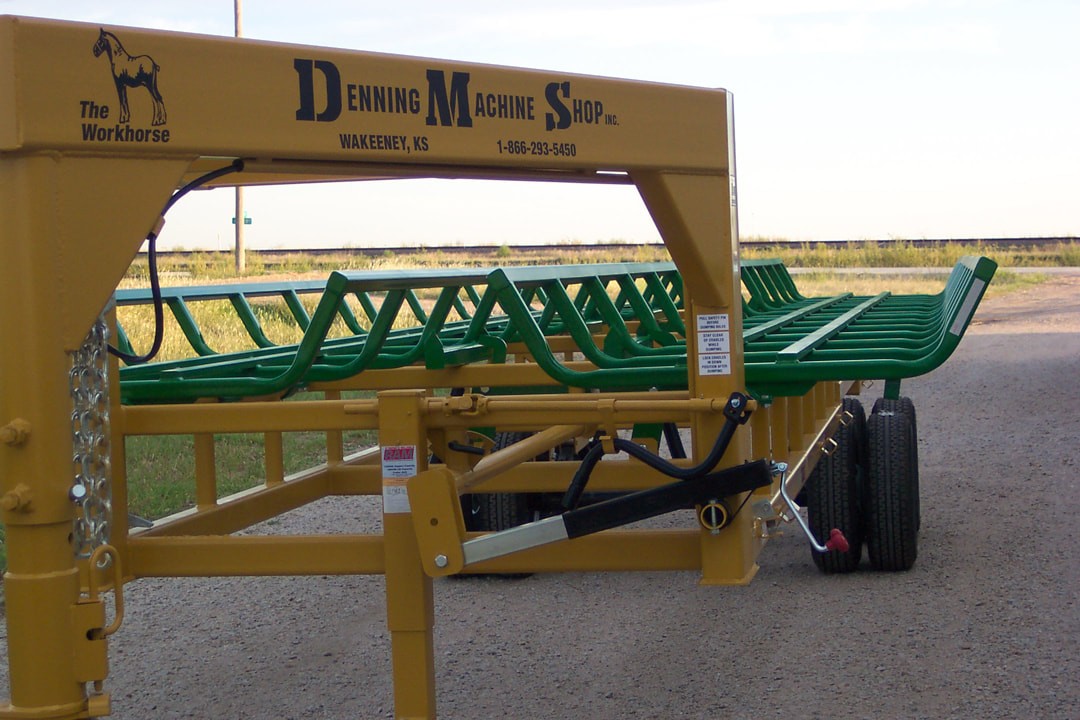
“You still need three ranch hands and a tractor to feed cattle in winter?”
That’s a myth that many modern ranchers are leaving behind — thanks to purpose-built hay bale trailers. Whether you’re running a 200-acre operation or feeding 500 head in sub-zero temps, a hay bale trailer can change your workflow fast.
Here’s how you can cut labor, save fuel, and feed more efficiently — even when conditions turn brutal. But first… do you know what kind of trailer actually fits your ranch’s terrain and feeding cycle? It’s time to fetch the details –
Efficient cattle ranch equipment isn’t just a luxury — it’s now a necessity. Hay feeding trailers are proving to be one of the most cost-effective and time-saving tools in a rancher’s arsenal.
They let you:
• Transport 4-12 round bales in one go
• Feed directly in the field, no unrolling by hand
• Eliminate extra tractor runs and reduce wear on equipment
According to a 2024 report by USDA, cattle producers using automated or semi-automated feeding systems, like bale trailers, reduced winter labor hours by up to 38% compared to traditional feeding methods.
But here’s the catch — not all hay trailers are built to handle uneven terrain, heavy snow, or long-haul pasture feeding. That’s where custom fabrication makes all the difference.
Let’s face it — winter feeding is a grind. Frozen ground, muddy pastures, and unreliable machinery can slow everything down. A well-designed hay bale trailer for livestock feed allows you to streamline the process:
• Pre-load bales before a storm hits
• Haul 2x faster across large pastures
• Feed in rows without dismounting the vehicle
Using the right round bale transport for cattle reduces tractor idle time, increases safety, and saves you fuel — especially important when diesel costs spike.
Question: Are you still relying on an old flatbed and chains? Or is it time to invest in a welded, reinforced hay bale trailer for sale that matches your herd size?
Every ranch is different — slope, distance, herd size, weather. So why settle for an off-the-shelf solution?
Custom-built trailers should be:
• Fabricated with high-tensile steel
• Designed for shear & brake precision
• Include options like quick-release feeding arms, hydraulic tilt, or multi-bale carriers
You also need rugged welds, reinforced axles, and tested driveline components. That’s where our machine shop comes in — ensuring your trailer isn’t just built to spec, but to outlast it.
Denning Machine Shop Inc, with its range of fabrication services, is ready to deliver trailers and components that meet your ranch’s exact needs — from drive line parts to fully welded hay trailers.
Feeding cattle miles from your hay barn? You’re not alone. Many ranchers now deal with pasture bale hauling across wide acreage. Without the right trailer, you’re:
• Burning time driving back and forth
• Damaging fields with heavy machinery
• Risking equipment failure mid-winter
A properly fabricated hay bale trailer allows you to haul more bales in fewer trips, even in challenging terrain.
So, what’s the real cost of not upgrading?
1. What’s the ideal hay trailer size for a 100-head cattle operation?
A 6-bale trailer is often ideal for mid-sized herds, balancing efficiency and maneuverability across mixed terrain.
2. Can I use my current truck or do I need a tractor?
Many custom hay bale trailers are designed to be pulled by trucks with standard hitches, reducing the need for constant tractor use.
3. How do trailers help in winter feeding conditions?
Trailers allow bulk pre-loading and rapid field distribution, reducing time spent exposed to cold and minimizing equipment downtime.
4. What’s the maintenance like on these trailers?
Custom trailers built with precision welding and machined parts typically need only seasonal checks for axle wear and hydraulic fittings.
5. Are there hay trailers designed for steep or uneven ground?
Yes, our custom-fabricated trailers can be built with enhanced balance, tire options, and reinforced axles to handle rugged terrain.
Look — you’re not feeding cows in the 90s anymore. Today’s cattle ranchers are investing in smarter logistics, and hay bale trailers are leading that charge.
From better winter feeding solutions to faster pasture bale hauling, you need gear that cuts labor without cutting corners.
If you’re ready to stop wrestling with outdated equipment and start working smarter — let’s talk fabrication, welding, driveline, or a full trailer buildout.
Curious how a custom trailer build could reduce your winter workload by half? Reach out today and your herd (and your crew) will thank you.